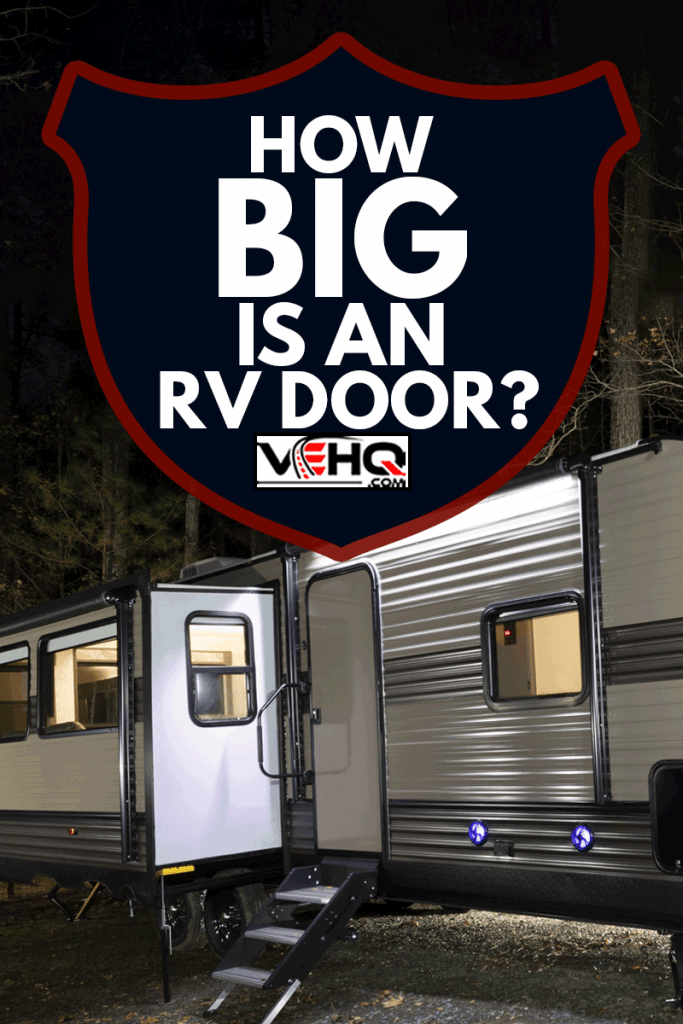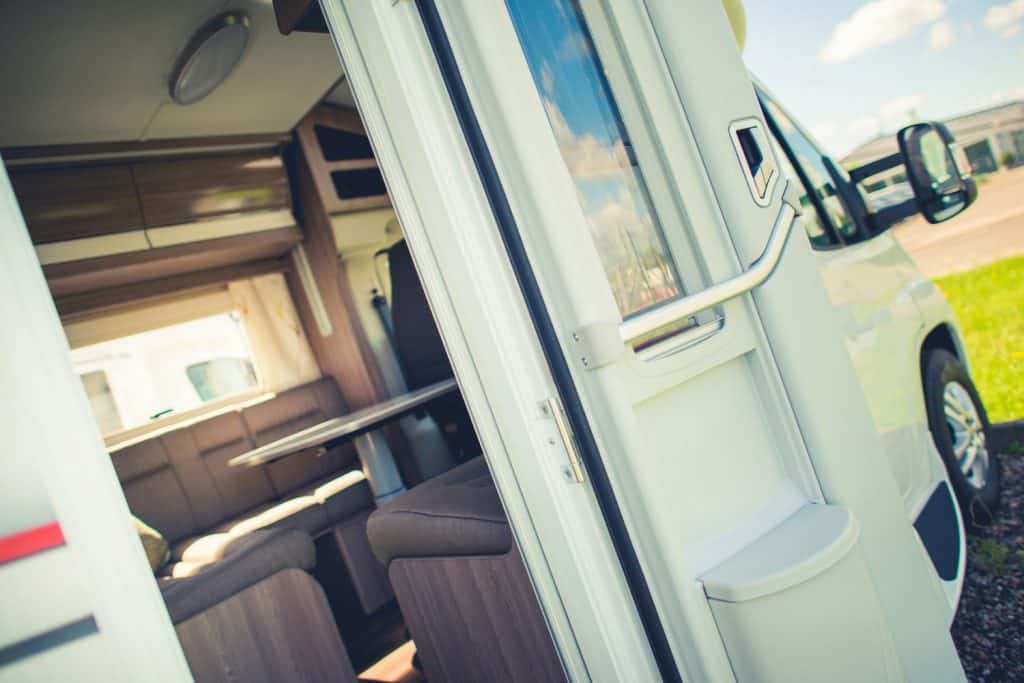If you're thinking about purchasing or remodeling an RV, there are several unique features you'll want to take into account. One often overlooked feature, however, is the RV door. Your RV door needs to be functional and well-fit for the rest of your ride if the RV is comfortable. If you don't have much experience with RVs, though, you may find yourself wondering: How big is an RV door?
RV doors come in a wide range of sizes. The average RV entrance door is 26 inches wide and 70 inches tall. That said, larger RVs have larger doors, while smaller campers have smaller entryways.
What's more, your RV has several different doors. The dimensions of your RV's access door will be different than those of your front door. If you're looking, then, to replace an RV door or even modify one that you already have, be prepared to do a lot of preparatory math. Luckily, we're here to do a lot of the heavy lifting for you.

How Big Is An RV Door?
The size of your RV entry door will vary based on the kind of RV you have. If you have a Class A RV, for example, you can expect your RV door to be on the larger size. Alternatively, the doors for travel trailers and toy haulers are considerably smaller than those for campers.

On average, most RV doors come in at 72 inches tall. The width of an RV door, however, can vary between 14 inches and 70 inches, depending on the kind of RV you have. Smaller RVs, for example, tend to have doors that are shaped more like squares than rectangles.
Front Doors Vs. Access Doors
Your RV may have an access door in addition to its front door. An RV's access door isn't designed for folks to walk through. Instead, these doors are designed to cover your baggage doors or other storage units. As such, they're significantly smaller than your entry doors.
That said, you can replace an access door just as easily as you would an RV entrance door. Luckily, most access doors come equipped with their own door frames.
As such, the installation of an access door is a little simpler than that of an entrance door. Instead of fitting your new door to a pre-existing frame, you can remove the whole of the original door. It's simple to screw most new baggage doors into place so long as you have the right tools on hand.
How Do You Measure an RV Door?
It's easy to make mistakes when measuring your RV door. You need those measurements, however, before you can purchase a replacement door. If you don't measure your current RV door before purchasing an alternative, you risk bringing home a door that's too large or too small for your existing frame.
To measure your door effectively, you need to remove it from your door frame. Once you have your door separate from the rest of your RV, you can use a tape measure to get the height, width, and depth of your door. Do not include the door frame in your door's measurements. If you do, you risk purchasing a door that's incompatible with your RV.
How Thick is an RV Door?
Under ideal circumstances, you want your RV door to run parallel with the rest of your RV's walls. As such, your RV door can't be too thick or thin. A thick door won't close appropriately. Comparatively, a too-thin wall won't protect your RV from the elements and can disrupt the look of the vehicle's interior.
The average RV door is one and a half inches thick. Before you install a new door, however, be sure to measure the width of your frame to accommodate for any unique features. You can work with local and online realtors to ensure you bring home the best door for your RV renovations.
Installing a Screen Door in Your RV
If you want to install a screen door in your RV, you need to do your math carefully. Screen doors tend to be thinner than traditional RV doors. However, unless you intend to do a significant amount of work on your door frame, both the screen and the new door will need to fit within your existing boundaries.
It's easiest, when installing a screen door, to divide the thickness of your door frame between your two new doors. Be sure, however, to measure the thickness of your new screen door in advance. You'll want the combination of your new door and screen to fit into your frame perfectly instead of overlapping or underlapping the door frame. Doors that don't fit into your frame, after all, aren't going to do their jobs as effectively as doors that have been properly measured.
Can You Replace a Camper Door?
If your RV door has taken some damage or if you're in the market for some upgrades, you can replace your camper door. To replace a camper door on your own, you'll want to:
- Unscrew the door from its frame
- With the old door set to the side, secure the door frame with putty tape
- Attach your new door and screw it to your door frame
- Scrape away any remaining putty tape
- Test your door's stability and swing
If you don't want to replace your own camper door, professionals in your area can take on the work for you.
Replacement camper doors can run between $60 and $600, depending on which RV door you want to replace. Internal doors tend to be less expensive than external doors. Note that if you want a professional to replace your camper door, they may charge you both for expected labor and for the cost of your preferred door.
Why Do Some RVs Have Two Doors?
RVs that have two doors most often do so for the sake of passenger convenience. A two-door RV allows campers to more easily access their belongings in an uneven campsite and accommodates passengers with different camping habits. What's more, two-door RVs help keep certain RVs up to code by ensuring that all passengers can safely exit the vehicle in case of a fire.
That said, RVs that have two doors tend to have less internal storage space. These doors take up a significant amount of room while also weighing down your vehicle, meaning that you have to trade the convenience for some limitations on the road.
Are All Camper Doors on the Passenger Side?

The position of camper doors tends to reflect national driving practices. As a result, RVs sold in the United States have their camper doors on the passenger side of the vehicle. In most cases, the passenger's side of the RV will be on the right side of the street. If a passenger needs to disembark from the car, they can do so without putting themselves in danger of a roadway accident.
Measuring and Maintaining Your RV Doors
A properly installed RV door does more than just let you in and out of your vehicle. These doors protect you from accidents, bad weather, and pest infestations while making it easier for you to remodel the rest of your ride.
If you're considering buying a new RV or remodeling an old one, you need to know what your RV door's dimensions are. Keep the average size of most RV doors in mind, but don't be afraid to ask experts in your area for more information about any RV models that you may be interested in.
